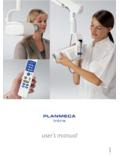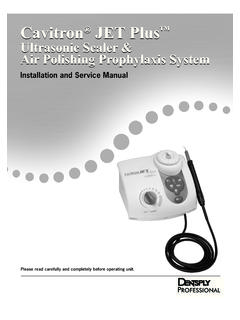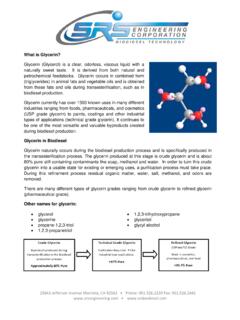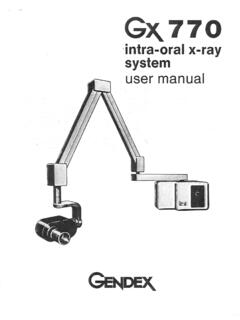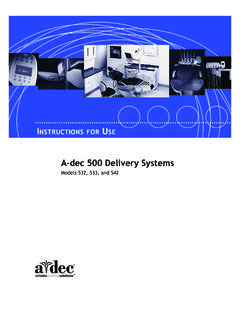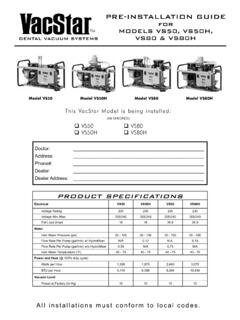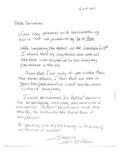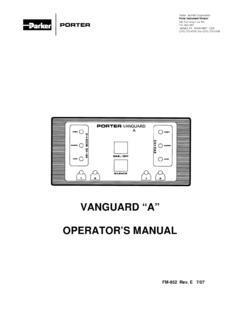Transcription of AlloDerm® Regenerative Tissue Matrix
1 alloderm Regenerative Tissue MatrixSoft Tissue replacement without a palatal harvestAlloDerm is an acellular dermal Matrix derived from donated human skin that undergoes a multi-step proprietary process that removes both the epidermis and the cells that can lead to Tissue rejection. alloderm has been used in a wide variety of soft Tissue grafting procedures such as root coverage, soft Tissue augmentation and guided bone regeneration with a consistent record of excellent offers numerous advantages compared to the connective Tissue autograft from the patient s palate: Eliminates the need for palatal surgery Removes palatal harvesting limitations from treatment planning considerations Reduces patient reluctance to follow through with surgical treatment Consistent quality Provided in multiple convenient sizes Available in two thickness ranges for use in different procedures: to mm - alloderm for root coverage, soft Tissue ridge augmentation, etc.
2 To mm - alloderm GBR for guided bone regeneration and barrier membrane functionWhat is alloderm Regenerative Tissue Matrix ? Procurement and safetyAlloDerm has a safety history of more than a decade. Introduced in 1994 for treating burn patients, alloderm has proved its versatility and safety in more than a million diverse procedures in general, orthopedic, urogenital, and dental owes its exemplary safety to the safeguards at every step starting from donor screening to the final packaging. Tissue accepted only from AATB (American Association of Tissue Banks) compliant Tissue banks Extensive panel of serology tests Proprietary processing technology removes immunogenic cells and minimizes risk of disease transmission Final sterility testing ensures that no external pathogens are introduced while processingAlloDermRegenerative Tissue MatrixProcessing of AlloDermThe proprietary processing to derive alloderm from donor Tissue involves a series of steps.
3 Treatment with buffered salt solution to separate and eliminate the epidermis Series of washes with mild non-denaturing detergent solutions to solubilize and eliminate all cells Final freeze drying step using patented technology that prevents damaging ice crystal formation How does alloderm work? alloderm provides a Matrix consisting of collagens, elastin, vascular channels, and proteins that support revascularization, cell repopulation and Tissue remodeling. After placement, the patient s blood infiltrates the alloderm graft through retained vascular channels, bringing host cells that adhere to proteins in the Matrix . Significant revascularization can begin as early as one week after implantation.
4 The host cells respond to the local environment and the Matrix is remodeled into the patient s own Tissue , in a fashion similar to the body s natural Tissue attrition and replacement cell repopulation and of intrinsic regeneration the components remain in their natural biologically active state, ADM is immediately recognized as human remodeling into the patient s own Tissue . Functional, physiological and reconstructive TissueRegenerative Tissue MatrixComplex acellular heterogenous scaffold, with growth factor binding sites and blood vessel architecture; dehydrated and ready to implantRemoval of epidermis and cellsAlloDermHistological evidence of remodellingA human histologic evaluation of alloderm and connective Tissue (CT) documented that both formed a band of dense collagenous Tissue when placed beneath a coronally advanced flap.
5 Gingival attachment, a combination of long junctional epithelium and connective Tissue adhesion, was comparable for both groups. At six months postoperatively, the overall histologic outcomes were similar for both CT and alloderm Tissue specimen demonstrating mucosal Tissue (M) overlying dense grafted connective Tissue (C) and osseous crest (B). Original magnification 40X; hematoxylin and eosin (H&E) et al. Histologic Evaluation of Autogenous Connective Tissue and Acellular Dermal Matrix Grafts in Humans. J Periodontol 2005;76 dermal Matrix specimen demonstrating mucosal Tissue (M) overlying the area of graft placement (ADM) and osseous crest (B). Original magnification 40X. Verhoff solution stained elastin fibers help differentiate graft area from host distinct surfaces Basement membrane side (BM) is rough and will not readily absorb blood.
6 Dermal side is smooth and will absorb blood. alloderm has up to a 2-year shelf-life when stored between 1 -10 C (34 -50 F). Open outer foil pack. Drop graft into saline bath directly from inner pouch. Rehydrate in two consecutive sterile saline baths. Remove paper backing from alloderm between first and second from pouchImportant: Before use, clinicians should review all risk information and directions, which can be found on the packaging and in the Information for Use attached to the packaging of each alloderm of useDocumented equivalence to autogenous connective Tissue Multiple, randomized clinical trials (RCT) have shown root coverage results with alloderm to be equivalent to autogenous connective Tissue , and concluded that the procedure was predictable and practical.
7 A meta-analysis of eight RCTs showed no statistically significant differences between the two groups for measured outcomes: recession coverage, keratinized Tissue formation, probing depth and clinical attachment Keys for successful root coverage include: Thorough root conditioning and/or restoration removal Flap or Pouch design that minimizes loss of vascularity Tension-free coronal positioning of flap or pouch to completely cover AlloDermAlloDerm is effective in augmenting thin Tissue around dental implants to create more attached Tissue . Treatment plan for revision of a failing 2-implant overdenture to a 5-unit cemented bar overdenture. The bony defect is grafted using autologous bone from osteotomies. The alloderm is oriented with basement membrane results show thick, immobile can be used effectively for soft Tissue ridge augmentation.
8 A tunnel or pouch may be created beneath the defect into which the alloderm can be inserted. If multiple layers of alloderm are used for increased thickness, it is recommended that it be layered, rather than rolled. In this indication, orient the dermal surfaces on the outside of the ridge deficiency at site of missing maxillary left lateral incisor and and sutured alloderm graft placed and sutured within the soft Tissue months post-op showing restoration of normal alveolar ridge is ideal for treating multiple defects in a single procedure. Available sizes include: 1cm x 1cm, 1cm x 2cm, 1cm x 4cm and 2cm x 4cm. After hydration it may be trimmed to the desired size with a scalpel or sharp recession with root surface graft placed in pouch and root coverage at one year CoverageSoft Tissue Ridge AugmentationSoft Tissue Augmentation Around Dental ImplantsPhotos courtesy of Dr.
9 Carl E. Misch, Beverly Hills, MichiganPhotos courtesy of Dr. Edward P. Allen, Dallas, TexasPhotos courtesy of Dr. Edward P. Allen, Dallas, TexasRegenerative Tissue Matrix A biological barrier for better hard and soft Tissue regeneration Extraction sites grafted with Grafton GBR covering the ridge beneath the flap to obtain tension-free result shows excellent soft Tissue GBR is produced by exactly the same process as alloderm , but it is thinner ( to ) which facilitates primary closure. It readily adapts to graft sites and can be secured with either sutures or other barrier membranes that either resorb too quickly or do not resorb at all, alloderm GBR actually allows the body to remodel it into the patient s own Tissue .
10 This results in good bone regeneration while benefiting soft Tissue quality and GBR, unlike conventional barrier membranes, if left exposed because of incomplete primary closure, has a significantly reduced chance of infection and graft failure due to rapid revascularization. A recent study demonstrated that sites covered with alloderm generated 16% more vital bone in extraction sockets than did sites covered with an ePTFE separate study concluded that alloderm , used as a barrier over resorbable hydroxyapatite in extraction sites, was able to preserve ridge dimensions and significantly increase the width of keratinized and alloderm GBR are available in these convenient sizes. Examples are shown to x 1cm2cm x 4cm1cm x 4cm2cm x 2cmOnlyAlloDermGBR1cm x 2cmAlloDerm Sizes available Guided Bone Regeneration1.
